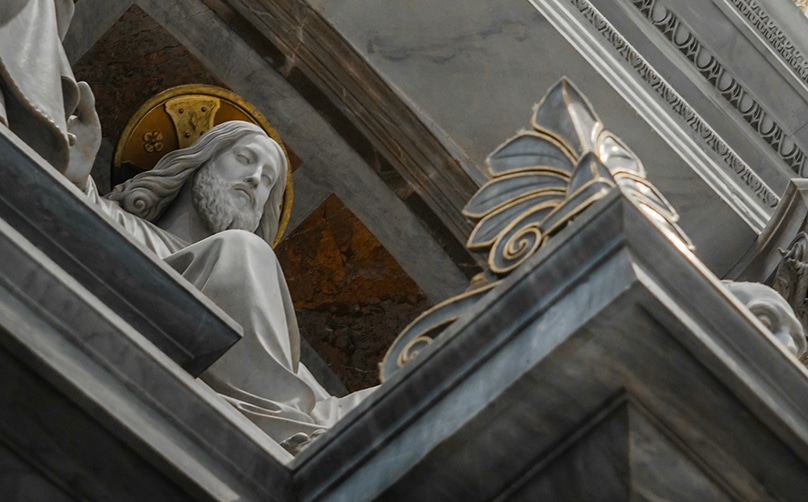
Some Protestants believe that Christ did not found a visible, hierarchical Church, but that he only preached the Kingdom of God, and it was the early Christians in different places who gradually formed themselves into communities of believers. Is this true?
Once again, the Scriptures make clear that Jesus founded a structured church which remains today with all the features he gave it two thousand years ago.
Christ began, of course, by preaching the Kingdom of God, which is the church. But he made clear that this Kingdom was to be a visible, hierarchically structured society.
And so he gathered around him 72 disciples and 12 apostles, whom he formed to be the leaders of the church and teachers of the truths he passed on to them. Christ also gave them the sacraments to communicate God’s grace, beginning with Baptism.
Then Christ promised one man, Peter, that he was to be the head of the church, the foundation on which the Church was built: “And I tell you, you are Peter, and on this rock I will build my church” (Mt 16:18).
Christ’s decision to found a church is clear here, as is his intention that there was to be just one Church, not a collection of many independent communities of believers.
Peter was given the keys of the kingdom, so that he could impose obligations on others and free them from obligations: “I will give you the keys of the kingdom of heaven, and whatever you bind on earth shall be bound in heaven, and whatever you loose on earth shall be loosed in heaven” (Mt 16:19). Later, Christ gave the power of the keys also to the apostles, the first bishops (cf. Mt 18:18).
In the Last Supper, Christ told Peter that he would pray for him so that he would keep the church faithful to his teaching: “Simon, Simon, behold Satan demanded to have you, that he might sift you like wheat, but I have prayed for you that your faith may not fail; and when you have turned again, strengthen your brethren” (Lk 22:31-32).
Thus, the church was to have authority to teach in Christ’s name, and the assurance of Christ’s prayer to remain faithful to his teaching.
Finally, after his resurrection, Christ conferred the headship of the church on Peter, making him the shepherd of the flock of believers: “Feed my lambs… Tend my sheep… Feed my sheep” (Jn 21:15-17). Before, Christ was the good shepherd. Now Peter would assume that role.
Where we see this structured, visible, hierarchical church clearly in the Scriptures is in what has come to be called the Council of Jerusalem (cf. Acts 15:1-35). It was held around the years 48-50 AD to decide whether Gentile converts to the faith needed to be circumcised.
The church in Antioch had been uncertain as to how to resolve this question, so they sent Paul, Barnabas and others to Jerusalem to submit the question to the apostles and elders there. That is, the community in Antioch realised that this was not a matter for them to settle on their own, but that it needed to be resolved by the central authority of the church.
After St Peter had given his opinion, James, the bishop of Jerusalem, suggested that the apostles follow Peter’s advice and so they decided that circumcision was not necessary, but that the faithful need only “abstain from the pollution of idols and from unchastity and from what is strangled and from blood” (Acts 15:20).
They put this in a letter and sent it to the church in Antioch, Syria and Cilicia. So, the teaching was intended not just for one city but for everywhere. It stated that the elders in Jerusalem had heard that certain men from Jerusalem had unsettled them, “although we gave them no instructions” (Acts 15:24).
Here we see that only when someone teaches with a mandate from the central authority of the church, or at least in agreement with that authority, does the teaching have authority. When the faithful in Antioch read the letter, “they rejoiced at the exhortation” (Acts 15:31).
It is clear in all this that Christ did in fact found a visible, hierarchically-structured church, with a central authority to resolve matters submitted to it, and that this authority was respected. The Catholic Church retains that structure to this day.
